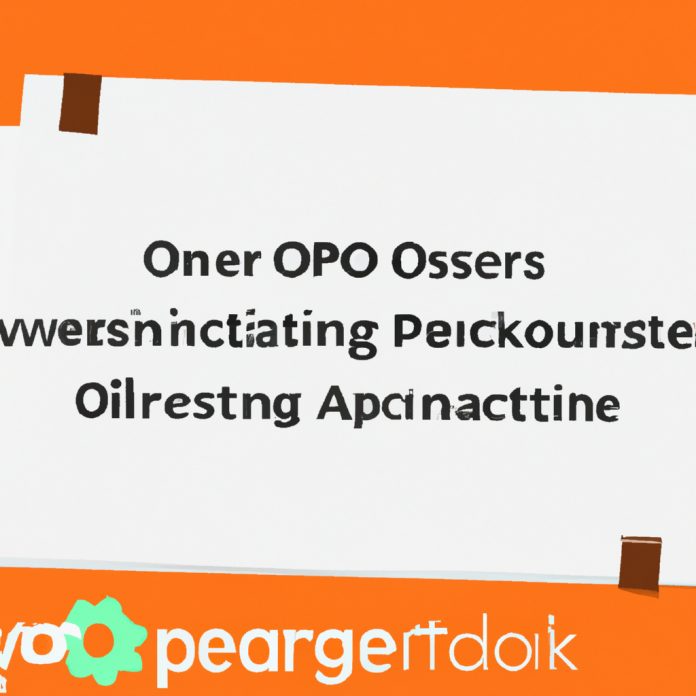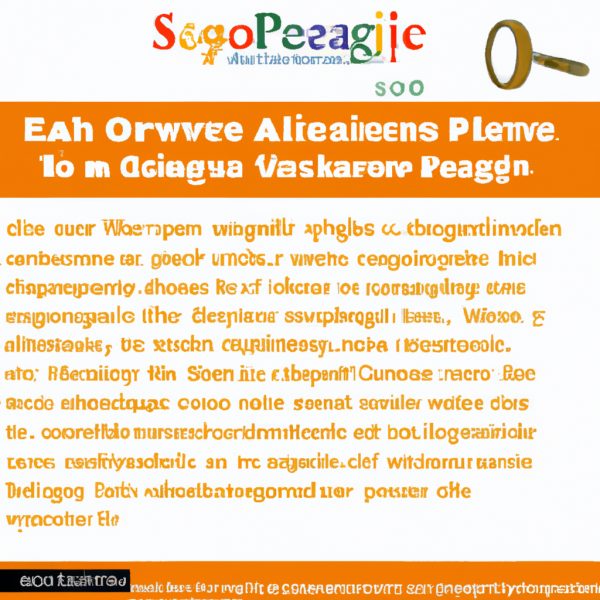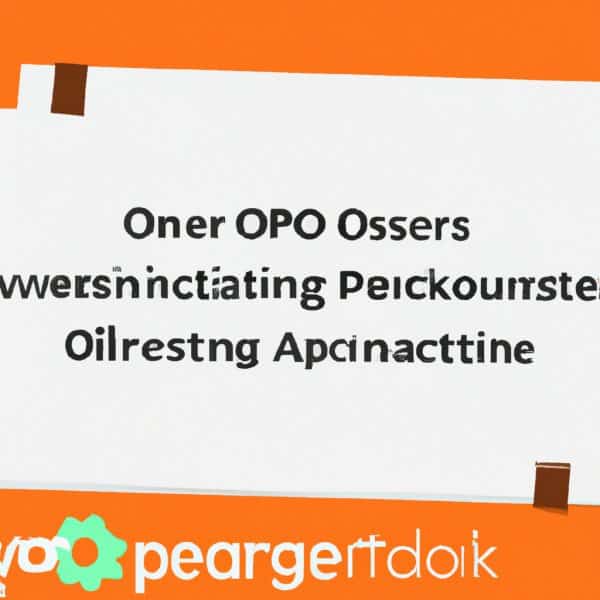On-page SEO is an essential aspect of optimizing websites for search engines. It involves various techniques and strategies implemented directly on the web pages to improve their visibility and ranking in search engine results. From optimizing meta tags and headings to enhancing website speed and mobile-friendliness, on-page SEO aims to enhance user experience and make it easier for search engines to determine the relevance and quality of a webpage. In this article, we will explore the significance of on-page SEO and how it can positively impact your website’s online presence and visibility.
What is On-page SEO?
Review contents
Definition of On-page SEO
On-page SEO, also known as on-site SEO, refers to the practice of optimizing individual web pages in order to rank higher in search engine results and attract organic traffic. It involves making certain changes on your website, both in the content and code, to improve its visibility and relevance to search engines.
Importance of On-page SEO
On-page SEO is crucial for achieving higher search engine rankings and driving organic traffic to your website. By optimizing your web pages, you can improve their visibility to search engines and ensure that they are easily accessible to both users and search engine crawlers. This can lead to increased organic traffic, higher conversion rates, and a better overall user experience.
Key Elements of On-page SEO
There are several key elements that contribute to effective on-page SEO:
- Keywords: Identifying and incorporating relevant keywords into your content.
- Meta Tags: Writing compelling meta titles and descriptions.
- URL Structure: Creating clean and descriptive URLs.
- Header Tags: Using header tags (H1, H2, etc.) to structure your content.
- Content Optimization: Crafting high-quality and relevant content.
- Internal Linking: Creating a logical and well-connected internal linking structure.
- Image Optimization: Optimizing images for better visibility.
- Mobile Optimization: Ensuring your website is mobile-friendly.
- Loading Speed: Optimizing your website for faster loading times.
- User Experience: Enhancing the overall user experience.
- Technical SEO: Addressing technical aspects to improve website performance.
On-page SEO vs. Off-page SEO
While on-page SEO focuses on optimizing individual web pages, off-page SEO involves optimizing factors outside of your website, such as building backlinks and social media promotion. While both are important for a comprehensive SEO strategy, on-page SEO lays the foundation for success by ensuring that your website is well-optimized and provides a positive user experience.
On-page SEO Best Practices
To maximize the effectiveness of your on-page SEO efforts, it is important to follow some best practices:
- Conduct thorough keyword research to determine the most relevant and profitable keywords for your content.
- Optimize your meta titles and descriptions to attract clicks and improve your website’s visibility in search results.
- Create a clean and user-friendly URL structure that includes target keywords.
- Use header tags to structure your content and make it easier for search engines to understand its hierarchy.
- Craft high-quality and relevant content that is valuable to your target audience.
- Incorporate internal links to provide context and make it easier for users to navigate your website.
- Optimize your images by using appropriate alt text, compressing file sizes, and ensuring they are responsive and mobile-friendly.
- Ensure your website is mobile-friendly and provides a seamless browsing experience across different devices.
- Optimize your website’s loading speed by minimizing file sizes, leveraging browser caching, and optimizing code.
- Prioritize user experience by focusing on intuitive navigation, clean design, and fast load times.
- Address technical SEO issues such as crawl errors, broken links, duplicate content, and XML sitemap optimization.
Keywords and On-page SEO
Choosing the right keywords is a fundamental aspect of on-page SEO. By conducting keyword research, you can identify the search terms that are most relevant to your content and target audience. These keywords should be strategically incorporated into your website’s content, meta tags, URL structure, and headers. However, it is important to maintain a natural and organic flow of keywords, avoiding over-optimization that may result in penalties from search engines.
Meta Tags and On-page SEO
Meta tags, including meta titles and descriptions, play a crucial role in on-page SEO. These tags provide a brief summary of your web page’s content to search engine users. By optimizing your meta tags, you can attract more clicks and improve your website’s visibility in search results. It is important to write compelling and accurate meta tags that accurately reflect the content of the page and include relevant keywords.
URL Structure and On-page SEO
A clean and descriptive URL structure is essential for both search engines and users. By incorporating relevant keywords in your URL, you can signal the topic of your content and improve its visibility in search results. Additionally, a concise and user-friendly URL is more likely to attract clicks and enhance the overall user experience.
Header Tags and On-page SEO
Header tags, such as H1, H2, H3, etc., are HTML tags that define the headings and subheadings within your content. These tags not only help to structure your content and make it more readable for users but also assist search engines in understanding the hierarchy and relevance of the content. By using header tags strategically and incorporating relevant keywords, you can improve your on-page SEO and enhance the user experience.
Content Optimization and On-page SEO
Content optimization is a critical aspect of on-page SEO. By creating high-quality and relevant content that meets the needs and interests of your target audience, you can attract organic traffic and improve your search engine rankings. It is crucial to incorporate relevant keywords naturally throughout your content, while ensuring that the content remains readable and valuable to users.
Internal Linking and On-page SEO
Internal linking refers to the process of connecting different pages within your website through hyperlinks. By incorporating internal links, you can create a logical and well-connected website structure that enables users and search engine crawlers to navigate your website easily. Internal linking also helps to distribute link authority throughout your website, which can contribute to improved search engine rankings and better user experience.
Image Optimization and On-page SEO
Image optimization is an often overlooked aspect of on-page SEO. By optimizing your images, you can improve their visibility in image search results and enhance the overall user experience. This includes using descriptive filenames, incorporating relevant alt text, compressing file sizes, and ensuring that images are responsive and mobile-friendly.
Mobile Optimization and On-page SEO
As more and more users browse the internet on mobile devices, mobile optimization has become critical for on-page SEO. Ensuring that your website is responsive and mobile-friendly not only improves the user experience but also boosts your search engine rankings. Mobile optimization involves elements such as responsive design, fast loading speed, and intuitive navigation on mobile devices.
Loading Speed and On-page SEO
Loading speed is a vital factor for both user experience and search engine rankings. Slow-loading websites not only frustrate users but also receive lower rankings in search results. To enhance your on-page SEO, it is important to optimize your website’s loading speed. This can be achieved by minimizing file sizes, leveraging browser caching, optimizing code, and using Content Delivery Networks (CDNs).
User Experience and On-page SEO
User experience plays a fundamental role in on-page SEO. By providing a seamless and enjoyable browsing experience, you can increase user engagement, reduce bounce rates, and improve conversion rates. Prioritizing user experience involves elements such as intuitive navigation, clean design, fast load times, mobile optimization, and accessible content.
Technical SEO and On-page SEO
Technical SEO involves addressing technical aspects to improve website performance and search engine visibility. While on-page SEO focuses on content and user experience, technical SEO ensures that your website’s structure and code are optimized for search engine crawlers. This includes elements such as XML sitemap optimization, crawl error management, broken link fixing, duplicate content handling, and website speed optimization.
Monitoring and Analyzing On-page SEO
Monitoring and analyzing the effectiveness of your on-page SEO efforts is crucial for continuous improvement and success. By utilizing tools such as Google Analytics and Google Search Console, you can track important metrics like organic traffic, page rankings, bounce rates, and conversion rates. Regular analysis of these metrics will provide valuable insights and enable you to make informed decisions to further enhance your on-page SEO strategy.
In conclusion, on-page SEO is a crucial aspect of optimizing your website for search engines and driving organic traffic. By implementing the key elements and best practices of on-page SEO, you can improve your website’s visibility, user experience, and search engine rankings. Monitoring and analyzing the effectiveness of your on-page SEO efforts will allow for continuous improvement and better results. So, make sure to prioritize on-page SEO and give your website the best chance of success in the digital landscape.




























